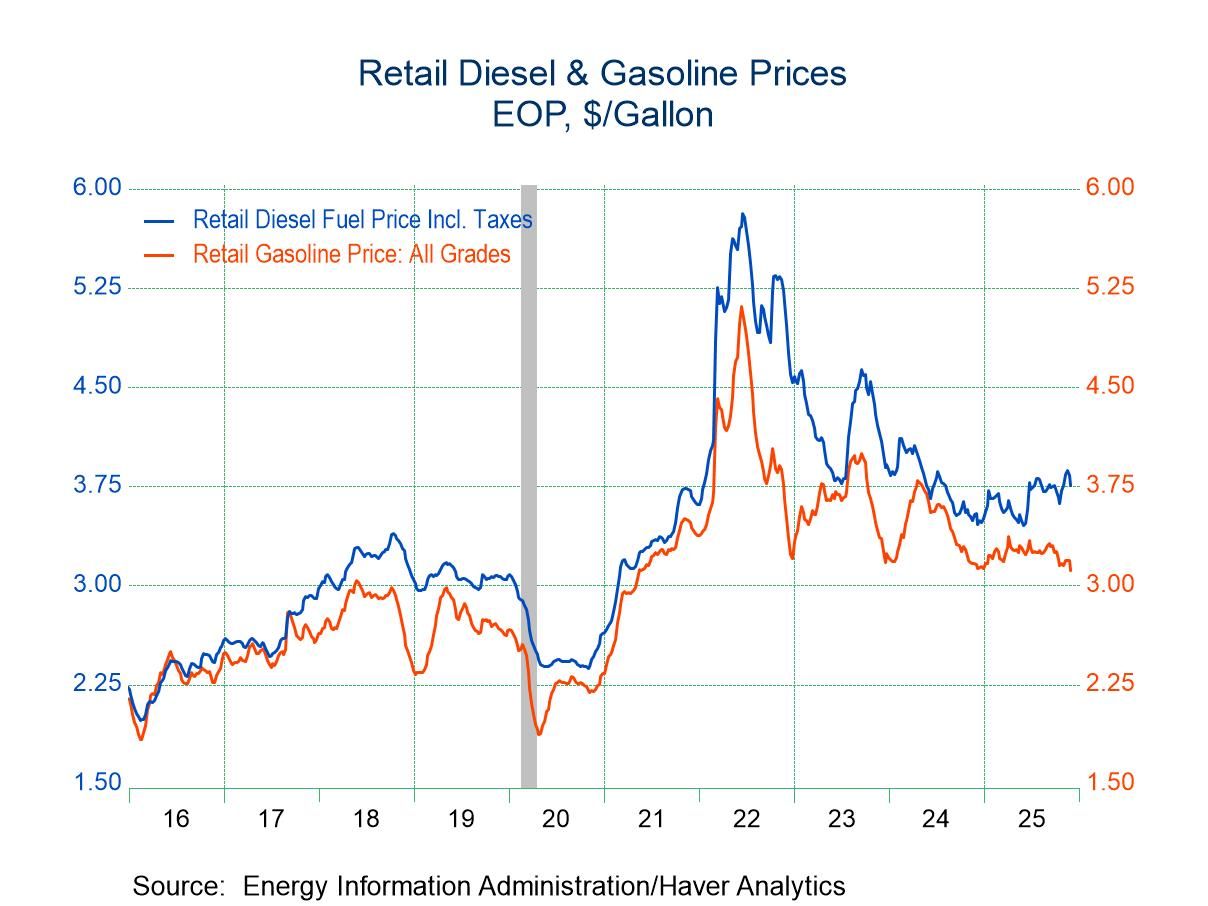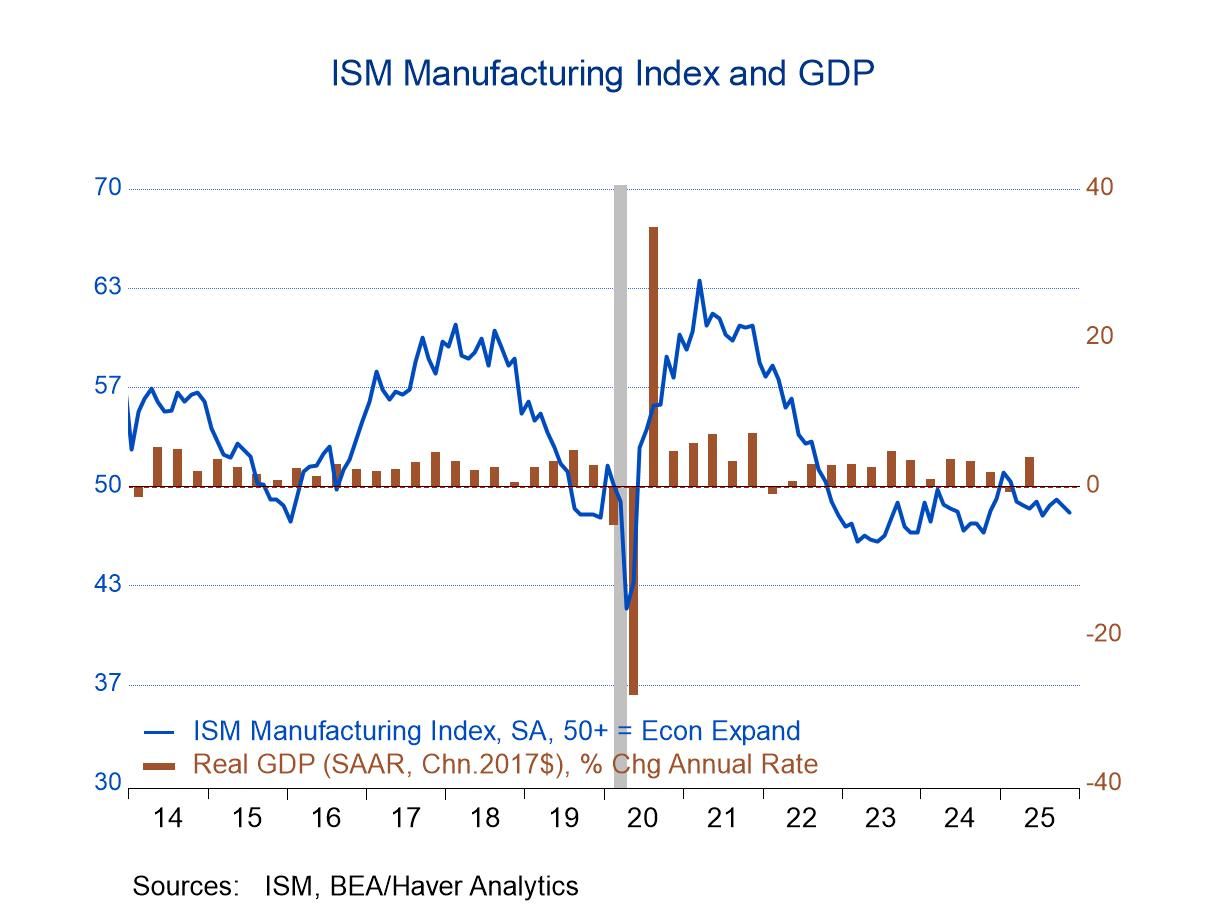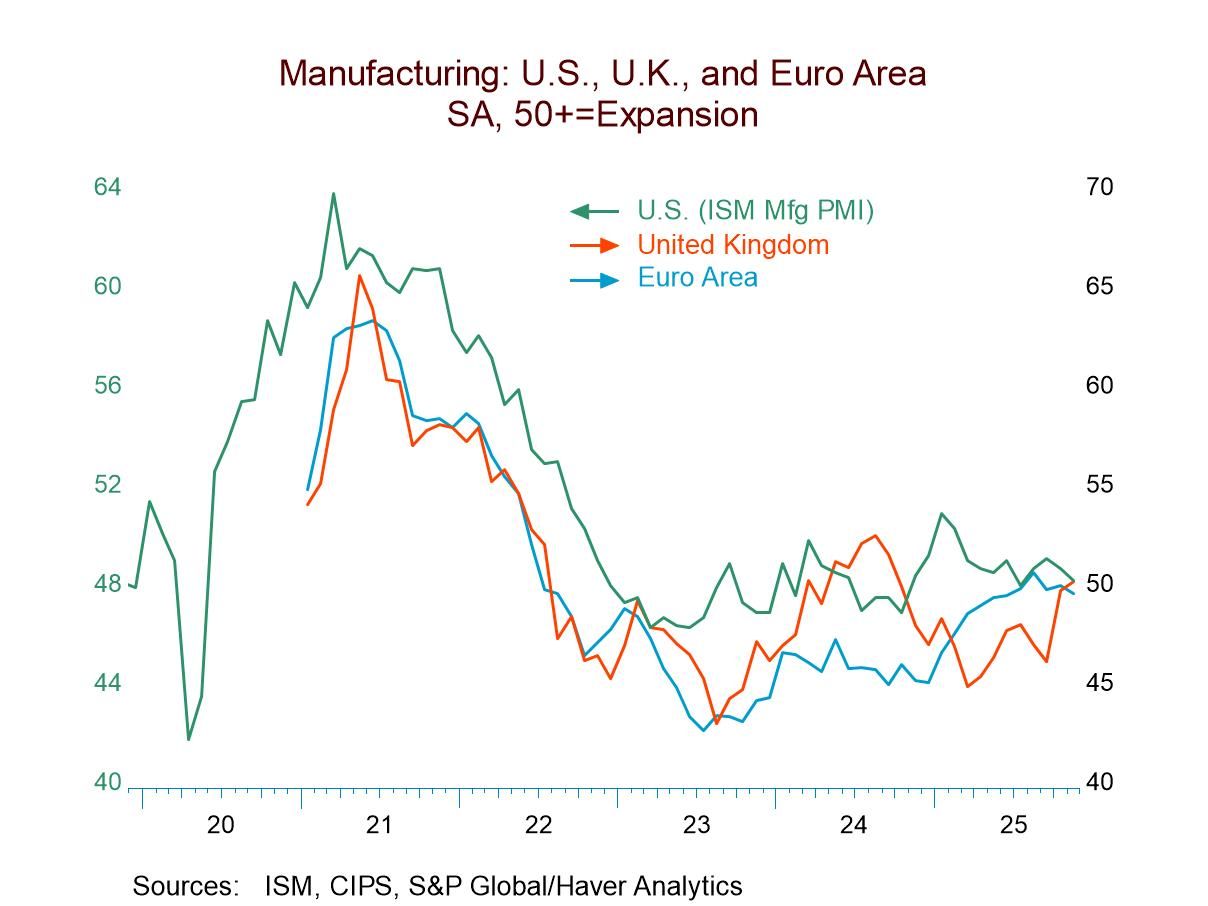U.S. GDP Decline is Little-Revised in Q1'22; Corporate Profits Fall
by:Tom Moeller
|in:Economy in Brief
Summary
- Int'l trade deficit deepening subtracts near-record from GDP growth.
- Inventory decumulation continues.
- Domestic demand picks up.


U.S. real GDP fell 1.5%, SAAR (+3.5% y/y) last quarter, revised from the 1.4% decline reported initially. Following a 6.9% rise during Q4'21, it was the only quarter of negative growth since the end of the recession in Q2'20. The Action Economics Forecast Survey expected a 1.3% decline.
Reported for the first time, after-tax corporate profits rose 1.5% (15.7% y/y) in Q1'22 after easing 0.8% in Q4'21. Profits before tax declined 2.3% (+12.5% y/y). Nonfinancial sector earnings eased 1.1% (+14.8% y/y), the first decline in five quarters. Financial sector profits fell 5.2% (+7.6% y/y) and earnings from abroad weakened 3.2% (+9.6% y/y).
Deterioration in the foreign trade balance subtracted an unchanged, near-record 3.2 percentage points from growth last quarter as exports fell 5.4% (+4.2% y/y) and imports jumped 18.3% (11.8% y/y). Inventory liquidation also reduced growth by 1.1 percentage points, revised from 0.8 percentage points.
Growth in final demand to domestic purchasers improved last quarter. The 2.7% increase (3.4% y/y) was revised from 2.6% and followed a 1.7% gain in Q4'21. Personal consumption rose 3.1% (4.8% y/y), revised from 2.7%. Motor vehicle expenditures rose an increased 16.5% (-10.5% y/y) and spending on recreational goods & vehicles increased a little-changed 6.9% (6.0% y/y). Furniture & appliance purchases fell a lessened 3.9% (-4.9% y/y). ln the nondurable goods sector, apparel spending declined a lessened 4.9% (+6.2% y/y) while gasoline expenditures fell 14.4% (+7.1% y/y). In the services area, recreation expenditures rose an increased 6.1% (21.6% y/y) while restaurant & hotel spending rose a little-changed 5.1% (19.5% y/y). Health care expenditures increased a lessened 2.3% (5.2% y/y) while outlays on housing & utilities firmed a little-changed 3.4% (1.3% y/y).


In the business investment sector, spending rose an unchanged 9.2% (5.7% y/y) but structures investment declined 3.6% (-4.8% y/y), revised from -0.9%. Equipment investment strengthened 13.2% (6.2% y/y), revised from 15.4%. Investment in computers strengthened a little-changed 24.9% (10.0% y/y) and industrial equipment investment rose 12.8% (16.2% y/y), revised from 23.8%. Transportation equipment investment fell a little-changed 9.5% (-7.2% y/y). Investment in intellectual property products increased 11.6% (10.5% y/y), revised from 8.1%.
Residential investment edged 0.4% higher (-4.4% y/y) last quarter, revised from 2.1%. This improvement followed two straight quarters of sharp decline.
In the government sector, spending declined an unchanged 2.7% (-1.6% y/y). Federal government outlays fell a minimally-changed 6.0% (-5.2% y/y) as defense spending declined an unchanged 8.5% (-4.4% y/y). State & local government outlays eased 0.6% (+0.7% y/y).
Pricing power continued to strengthen last quarter. The 8.1% increase (6.8% y/y) in the chain-type price index compared to 8.0% reported last month. It compared to expectations for an 8.0% rise. It was the largest increase since Q1'81, paced by an 18.1% (15.0% y/y) surge in the cost of residential investment. Overall consumer prices rose an unchanged 7.0% (6.3% y/y). The nondurable consumer goods price index rose an unchanged 14.9% (8.8% y/y) with the surge in gasoline prices. The durable consumer goods price index rose a little-changed 6.6% (10.9% y/y) and the consumer services price index gained a little-changed 4.5% both q/q and y/y. Outside of food & energy, the PCE price index increased 5.1% (5.2% y/y). The business investment price index increased 7.2% (5.0% y/y), revised from 6.8%. The government sector price index increased 9.7% (7.4% y/y), revised from 9.1%.
The GDP figures can be found in Haver's USECON and USNA databases. USNA contains virtually all of the Bureau of Economic Analysis' detail in the national accounts. Both databases include tables of the newly published not seasonally adjusted data. The Action Economics consensus estimates can be found in AS1REPNA.
The latest Congressional Budget Office Budget & Economic Outlook can be found here.


Tom Moeller
AuthorMore in Author Profile »Prior to joining Haver Analytics in 2000, Mr. Moeller worked as the Economist at Chancellor Capital Management from 1985 to 1999. There, he developed comprehensive economic forecasts and interpreted economic data for equity and fixed income portfolio managers. Also at Chancellor, Mr. Moeller worked as an equity analyst and was responsible for researching and rating companies in the economically sensitive automobile and housing industries for investment in Chancellor’s equity portfolio. Prior to joining Chancellor, Mr. Moeller was an Economist at Citibank from 1979 to 1984. He also analyzed pricing behavior in the metals industry for the Council on Wage and Price Stability in Washington, D.C. In 1999, Mr. Moeller received the award for most accurate forecast from the Forecasters' Club of New York. From 1990 to 1992 he was President of the New York Association for Business Economists. Mr. Moeller earned an M.B.A. in Finance from Fordham University, where he graduated in 1987. He holds a Bachelor of Arts in Economics from George Washington University.






 Global
Global